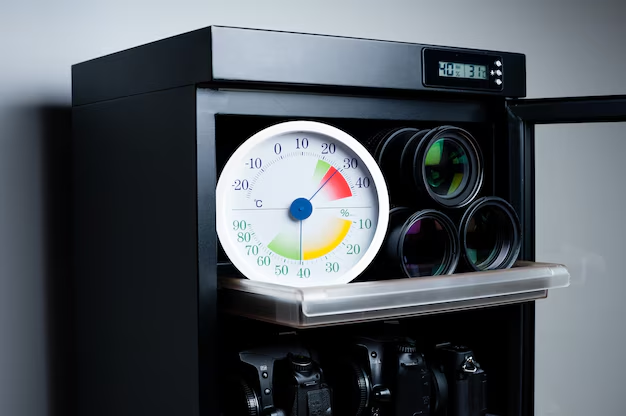How Much Energy Does Your Refrigerator Really Consume?
Have you ever wondered how much power your refrigerator uses daily? It’s an important question given that refrigerators run around the clock to keep your food fresh, impacting both your energy bills and your carbon footprint. Understanding your refrigerator's energy consumption is a key component of energy efficiency and sustainability in your home. In this article, we'll explore how much power a refrigerator generally takes, factors influencing its energy use, and ways you can enhance its efficiency to save money and energy.
Understanding Refrigerator Energy Use
Refrigerators are among the more significant contributors to household electricity consumption because they are always on, unlike other appliances that you can turn off when not in use.
The Basics: Energy Consumption in Refrigerators
1. Wattage and Kilowatt-Hours (kWh): Refrigerators generally have power ratings between 100 to 800 watts. However, more important than the wattage is how much energy the fridge consumes over time, expressed in kilowatt-hours. Most standard refrigerators use between 1 to 2 kWh per day, translating to roughly 365 to 730 kWh annually.
2. Energy Efficiency Ratings: Most modern refrigerators come with an Energy Star label, which indicates they're designed to be more energy-efficient than older models. Energy Star-rated refrigerators typically use about 15% less energy.
Factors Affecting Refrigerator Energy Use
There are several factors which influence how much electricity your refrigerator consumes:
1. Size and Type of Refrigerator
- Size: Larger units naturally consume more electricity due to increased internal space that needs cooling.
- Type: Features like in-door ice dispensers and additional temperature zones can also increase energy use.
2. Age and Condition
- Older refrigerators are generally less efficient due to technology limitations and potential component wear.
- Regular maintenance, such as cleaning the coils and ensuring the door seals are intact, can help maintain efficiency.
3. Ambient Temperature and Location
- A fridge located in a warmer area, such as near an oven or a window, will have to work harder to maintain the desired temperature.
- Positioning your refrigerator in a cooler spot can reduce its energy needs significantly.
4. Usage Patterns
- Frequent opening and closing of the fridge door leads the appliance to expend more energy to restore the set internal temperature.
5. Temperature Settings
- Setting your refrigerator to a very cold temperature increases energy consumption. The optimal temperature for a refrigerator is typically about 37°F (3°C), and 0°F (-18°C) for the freezer.
Practical Tips for Reducing Refrigerator Energy Consumption
Reducing the energy consumption of your refrigerator not only lessens your environmental impact but can also result in noticeable savings on your electricity bill. Here’s how you can optimize your refrigerator usage:
1. Regular Maintenance
- Clean Condenser Coils: Dusty coils can lead to inefficient operation. Cleaning them twice a year helps maintain energy efficiency.
- Check Door Seals: Ensure the gaskets are tight and intact to prevent cool air from escaping.
2. Optimal Stocking and Organization
- Avoid overpacking your refrigerator as this restricts air circulation and makes it work harder.
- Arrange items so frequently accessed foods are easily reachable, minimizing the time the door is open.
3. Energy-Efficient Models
- If your refrigerator is over a decade old, consider upgrading to a newer, more efficient model. Energy Star appliances can significantly cut down energy use.
4. Location and Temperature Management
- As mentioned earlier, place your refrigerator away from heat sources.
- Use a thermometer to ensure your appliance is operating at optimal temperatures.
5. Upgrade Older Appliances
- If feasible, replace aging refrigerators with new, energy-efficient models. While there’s an upfront cost, the eventual savings on energy bills and reduced carbon footprint can be worth it.
Additional Considerations
Understanding your refrigerator’s energy usage is part of a larger picture of household energy efficiency. Here are some additional factors and tips that might help:
Refrigerator Types and Their Impact
- Top-Freezer Models: Generally use less energy than side-by-side or bottom-freezer models.
- Manual vs. Automatic Defrost: Models with manual defrosting can use less power but require regular maintenance to avoid ice buildup.
Seasonal Considerations
During hotter seasons, your refrigerator may consume more energy due to increased ambient temperatures. Adjust usage habits accordingly by:
- Reducing the number of times the door is opened.
- Ensuring the unit is shaded from direct sunlight.
The Role of Smart Technology
Modern refrigerators often come equipped with smart technology that can help optimize energy use. Features include:
- Energy Saving Mode: Automatically adjusts temperature settings to save power.
- Usage Alerts: Notifications for abnormal temperature increases or doors left ajar.
Quick Reference: Refrigerator Energy Efficiency Checklist
Here's a succinct guide to keep your refrigerator running efficiently:
- 📏 Size Matters: Choose the right size for your needs—bigger isn’t always better.
- 🔄 Routine Maintenance: Clean coils and check door seals regularly.
- 🔧 Optimal Settings: Keep fridge at 37°F (3°C) and freezer at 0°F (-18°C).
- 🌡️ Temperature Control: Use thermometers to monitor appliance settings.
- 🆕 Upgrade Wisely: Consider energy-efficient models if replacing your old unit.
Final Insights
Understanding how much power your refrigerator uses and implementing measures to enhance its efficiency can have significant benefits, both financially and environmentally. Refrigerators, like all home appliances, function best with proper usage and maintenance. Whether you're looking to reduce your energy bills, decrease your carbon footprint, or simply ensure your refrigerator operates optimally, these insights will help you make informed decisions without compromising on convenience or functionality.
